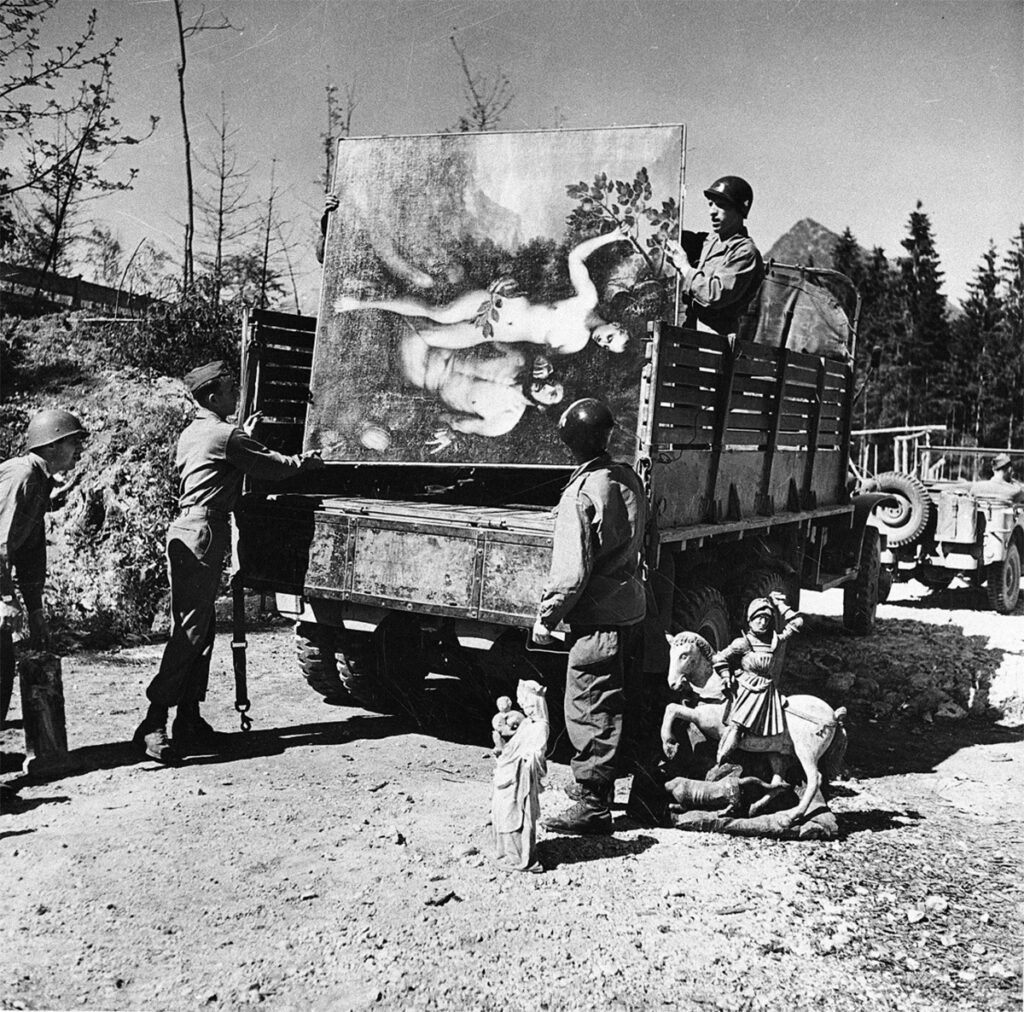The MFAA (Monuments, Fine Arts, and Archives Program), which is most often referred to as the Monuments Men, was a group of artists, sculptors, architects, museum curators, and other nonmilitary professions recruited by the Allied Forces in WWII to help protect and recover stolen artifacts from destruction during the war.
Hitler was obsessed with art and began systematically stealing artifacts, paintings, gold, anything of value from the European and the Jewish families he sought to eliminate. Part of his plan was to start a museum complex in Austria after the end of the war.
 When it became apparent that Germany would lose the war, Hitler decided to destroy what he had stolen. Francis Henry Taylor, Curator of the Museum of Modern Art at the time, relentlessly requested that President Franklin D. Roosevelt do something to stop the decimation of these treasures. Roosevelt responded by creating the MFAA, which later became the Monuments Men.
When it became apparent that Germany would lose the war, Hitler decided to destroy what he had stolen. Francis Henry Taylor, Curator of the Museum of Modern Art at the time, relentlessly requested that President Franklin D. Roosevelt do something to stop the decimation of these treasures. Roosevelt responded by creating the MFAA, which later became the Monuments Men.
A team saved artworks such as Michelangelo’s Bruges Madonna; Vermeer’s The Artist’s Studio; and Jan van Eyck’s Ghent Altarpiece. One of these men, Frederick Charles Shrady, settled in Easton, CT after the war. Shrady and the other Monuments Men evacuated these great works of art, along with over 15,000 other art pieces and cultural objects, from the Altausee Salt Mine in Austria.
Shrady’s fame lasted long past the war – he became a local 068 celebrity as an artist and sculptor. Shrady created “Our Lady of Fatima,” a ten-foot-high bronze statue which was commissioned by the Vatican. She found her home in the gardens of the Vatican in 1983.
Shrady and the other men and woman who served as a part of the MFAA were not trained as soldiers, yet they risked their lives to save the artwork that Hitler sought to destroy.